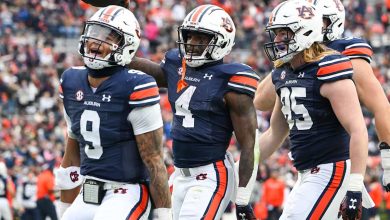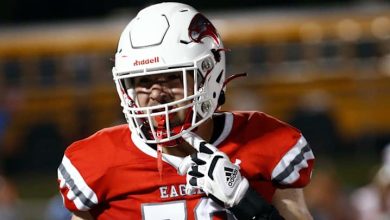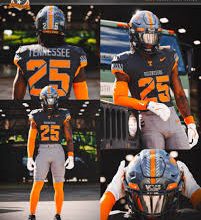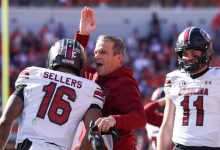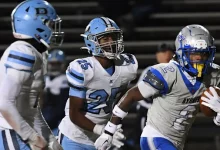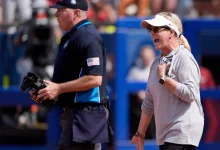Baltimore Ravens made history with likely NFL’s first all-Black quarterback room, featuring Lamar Jackson, Tyler Huntley, Josh Johnson, coach Kerry Dixon, and Tee Martin—breaking barriers and celebrating long-denied excellence.

In the annals of NFL history, few moments resonate with as much significance as the Baltimore Ravens’ groundbreaking assembly of what is believed to be the league’s first all-Black quarterback room. Comprising Lamar Jackson, Tyler Huntley, Josh Johnson, assistant coach Kerry Dixon, and quarterbacks coach Tee Martin, this assembly symbolizes a monumental shift in the league’s racial landscape, challenging longstanding stereotypes, and celebrating the resilience and excellence of Black athletes and coaches. This moment is not merely a symbolic milestone; it is a testament to ongoing progress, societal change, and the enduring fight for racial equality within professional sports. As these figures stood together in unity, they broke down barriers that once confined Black players and coaches to subordinate roles, paving the way for a more inclusive future.
Historical Context of Race and the NFL
The NFL’s history is intertwined with race—marked by periods of exclusion, discrimination, and perseverance. In the league’s early decades, Black athletes faced systemic barriers, relegated to lesser roles, and often denied opportunities to lead or coach. The “gentlemen’s agreement” of the mid-20th century effectively barred Black players from many teams, perpetuating segregation and inequality. Even after integration, Black players were often stereotyped, pigeonholed into specific positions such as running backs or defensive backs, with quarterbacks—considered the leadership position—being predominantly occupied by white athletes.
Throughout the 20th century, Black players fought tirelessly to shift perceptions. Pioneers like Willie Thrower, Marlin Briscoe, and Warren Moon challenged stereotypes, slowly opening doors that had been firmly closed. Yet, the quarterback position remained particularly resistant to Black leadership, partly due to racial biases about intelligence, decision-making, and leadership qualities. This systemic discrimination persisted until recent decades, with trailblazers like Michael Vick, Randall Cunningham, and later, Lamar Jackson, breaking through the racial stereotypes to demonstrate excellence on the field.
Lamar Jackson: A Trailblazer and Symbol of Change
Lamar Jackson, the Ravens’ dynamic quarterback, has been a beacon of excellence and resilience. Drafted in 2018, Jackson’s rise to stardom shattered expectations about Black quarterbacks in the NFL. His electrifying play, leadership qualities, and MVP season in 2019 challenged stereotypes and demonstrated that Black athletes could excel as the league’s signal-callers. Jackson’s success has served as an inspiration to aspiring Black quarterbacks and has helped shift perceptions within the league and society.
Beyond his athletic prowess, Jackson has been vocal about the importance of representation and breaking barriers. His presence as a Black quarterback leading an NFL franchise signifies progress, yet it also underscores the ongoing need to diversify leadership roles within the sport.
The Significance of the All-Black Quarterback Room
The formation of an all-Black quarterback room within the Ravens organization is a historic milestone, representing a convergence of talent, leadership, and cultural significance. The room includes Lamar Jackson, Tyler Huntley, and Josh Johnson—each a talented quarterback—alongside assistant coach Kerry Dixon and quarterbacks coach Tee Martin, both of whom are Black leaders in coaching and mentorship roles.
This assembly defies traditional NFL stereotypes that often associate leadership and strategic thinking with white players and coaches. It reflects a broader societal shift towards racial equality and inclusion, illustrating that Black athletes and coaches possess the skills, intelligence, and leadership qualities necessary for success at the highest levels. The moment also challenges the residual biases and structural barriers that have historically hindered Black professionals from reaching these positions.
The visual power of this moment—these men standing united—cannot be overstated. It sends a powerful message to young athletes and aspiring coaches that race does not determine leadership potential. It affirms that talent and dedication are the true measures of worth, and that opportunity should be accessible to all, regardless of racial background.
Breaking Stereotypes and Challenging Norms
For decades, NFL culture has been shaped by stereotypes about Black athletes, often limiting their roles and perceived capacities. The all-Black quarterback room directly confronts these stereotypes, demonstrating that Black players and coaches are not only equally capable but excel in leadership roles traditionally dominated by white individuals.
This moment also highlights the importance of representation in fostering a more inclusive environment. When young Black athletes see individuals like Jackson, Huntley, Johnson, Dixon, and Martin in prominent roles together, it reinforces the idea that their aspirations are valid and achievable. It promotes diversity at all levels—players, coaches, and management—creating a more equitable landscape.
Furthermore, this assembly challenges the NFL’s historical hesitations and biases. Although the league has made strides in recent years, systemic barriers still exist. The Ravens’ all-Black quarterback room signals a shift in mindset, emphasizing that talent and leadership are not dictated by race, but by ability, hard work, and opportunity.
The Role of Coaches and Mentorship
Kerry Dixon and Tee Martin, both Black coaches, play essential roles in shaping the next generation of quarterbacks. Their presence in this historic room underscores the importance of mentorship and representation behind the scenes. Coaches are vital in developing talent, fostering confidence, and creating an environment where Black athletes can thrive.
Tee Martin, a former NFL wide receiver and now quarterbacks coach, has been recognized for his mentorship and strategic acumen. His leadership helps ensure that Black quarterbacks receive the support and development they need to succeed. Similarly, Kerry Dixon’s role as an assistant coach signifies the growing presence of Black leadership in NFL coaching staff, challenging the historically low representation of minorities in coaching roles.
This mentorship and leadership are crucial, as they help dismantle stereotypes and create pathways for more Black coaches and players to ascend into leadership positions. Their example inspires young Black athletes to pursue coaching careers, ultimately contributing to a more diverse and inclusive league.
Cultural Significance and Broader Impact
The significance of this historic moment extends beyond the NFL. It reflects broader societal shifts towards racial equality, representation, and breaking down systemic barriers. In a nation grappling with ongoing discussions about race, privilege, and social justice, the Ravens’ all-Black quarterback room serves as a powerful symbol of progress.
It highlights that diversity is not just a moral imperative but also a strategic advantage. Teams that embrace inclusion often benefit from a wider range of perspectives, innovative strategies, and stronger team cohesion. The Ravens’ example encourages other organizations—sports, corporate, and community—to pursue similar initiatives, fostering environments where all individuals can succeed regardless of race.
This moment also sparks conversations about the importance of representation in media, leadership, and decision-making roles. It challenges stereotypes, corrects misconceptions, and provides role models for future generations.
Challenges and the Road Ahead
While this historic assembly marks significant progress, challenges remain. The NFL continues to grapple with issues related to racial disparities, representation, and systemic bias. Increasing diversity in coaching, management, and executive positions is essential for sustained change.
Moreover, the visibility and success of the Ravens’ all-Black quarterback room must be accompanied by broader efforts to address inequities in youth sports access, education, and community support. Creating pipelines for Black athletes and coaches requires investment, mentorship, and policy changes.
The journey toward racial equity in the NFL is ongoing. The Ravens’ milestone is a celebration of what has been achieved and a call to action for continued progress. It underscores that change is possible when organizations prioritize inclusion and challenge entrenched stereotypes.
Inspiration for Future Generations
The visual of these men standing together embodies hope and possibility. For young Black athletes, it signals that they too can aspire to leadership roles, whether on the field or in coaching and management. For aspiring coaches and staff, it affirms that pathways exist and that their contributions are vital.
This moment also encourages societal reflection on the importance of breaking down barriers across all sectors—sports, business, politics, education—and fostering environments where diversity is celebrated and leveraged.
A Landmark Moment in NFL History
The Baltimore Ravens’ all-Black quarterback room is more than a collection of talented individuals; it is a symbolic triumph over racial stereotypes, a celebration of diversity, and a testament to the ongoing fight for equality. It signifies that talent and leadership are universal qualities, transcending race, and that progress is possible when organizations commit to inclusion.
As Lamar Jackson, Tyler Huntley, Josh Johnson, Kerry Dixon, and Tee Martin stand together, they embody a future where the NFL—and society at large—embrace the richness of diversity. Their unity challenges outdated notions, inspires future generations, and paves the way for a more equitable and inclusive league. This historic moment is a reminder that barriers can be broken, stereotypes dismantled, and excellence celebrated in all its forms.



